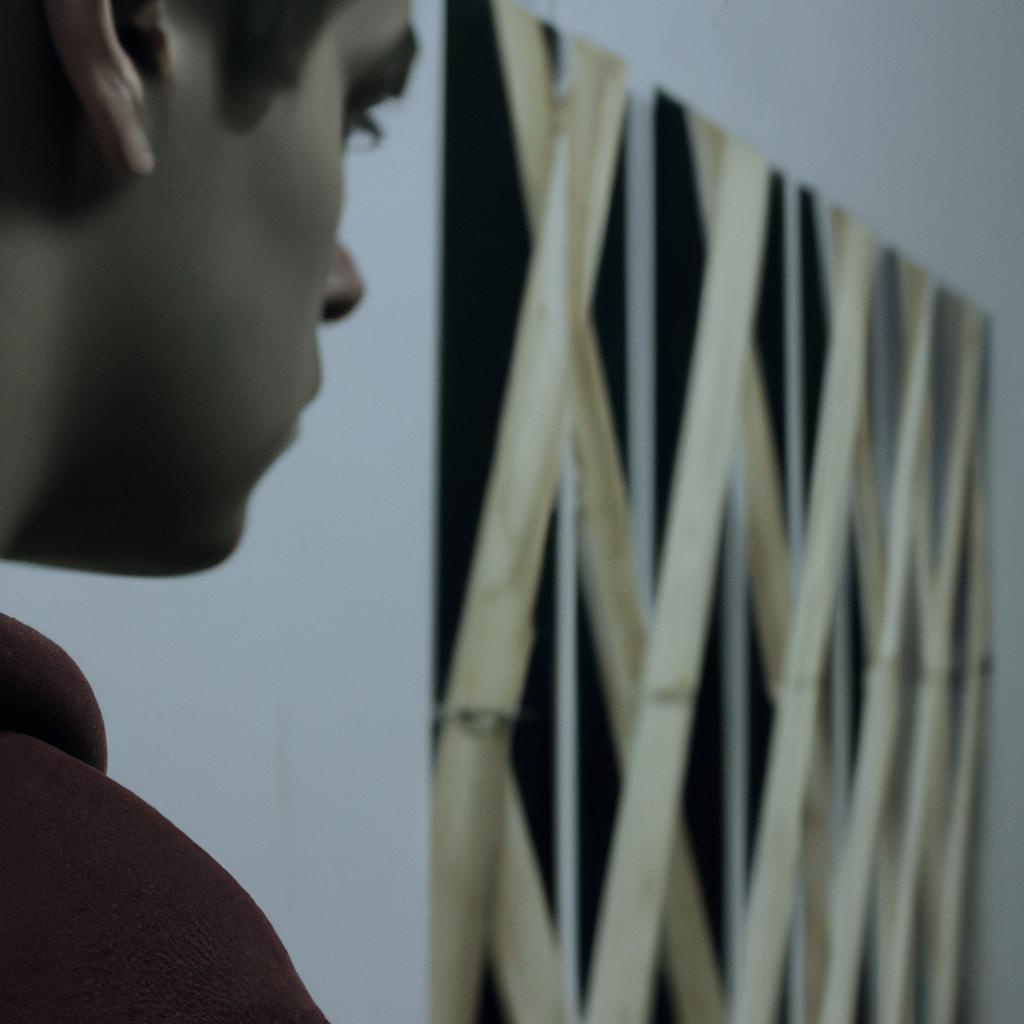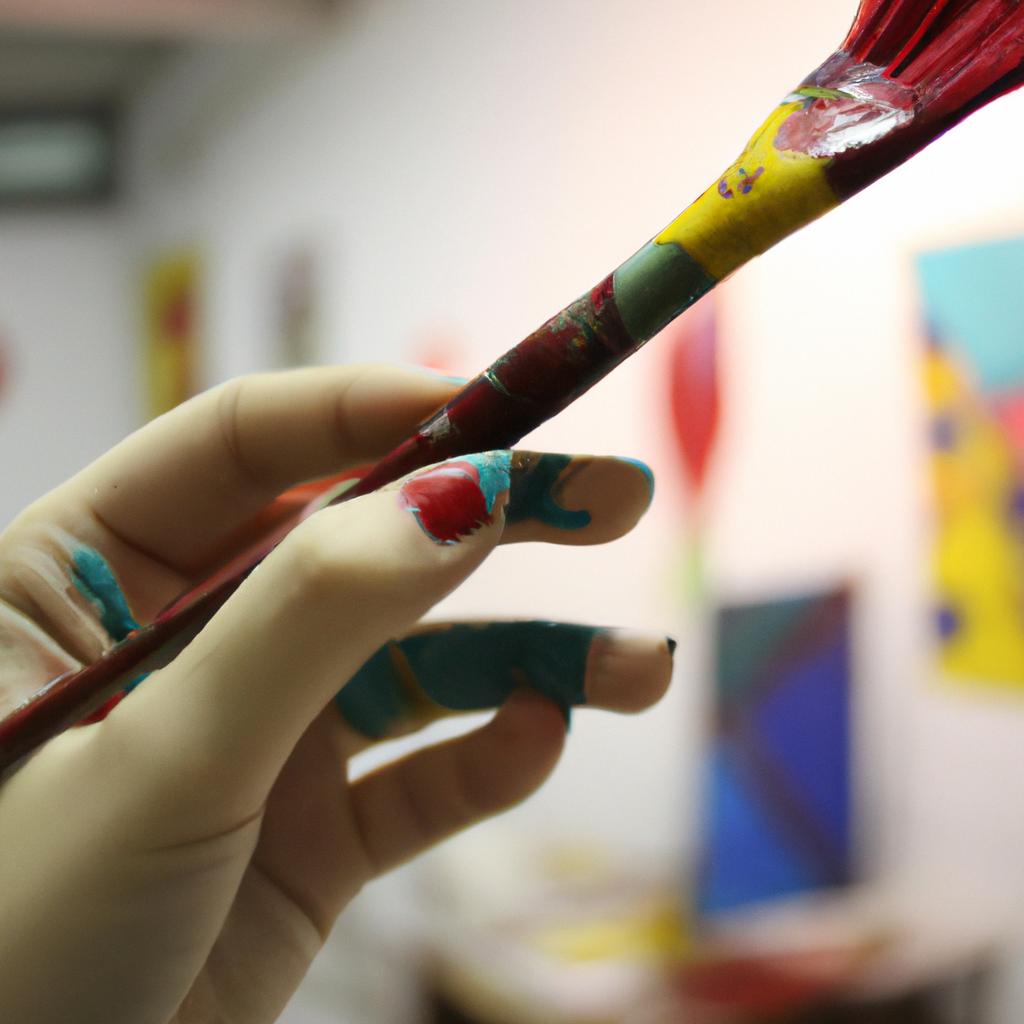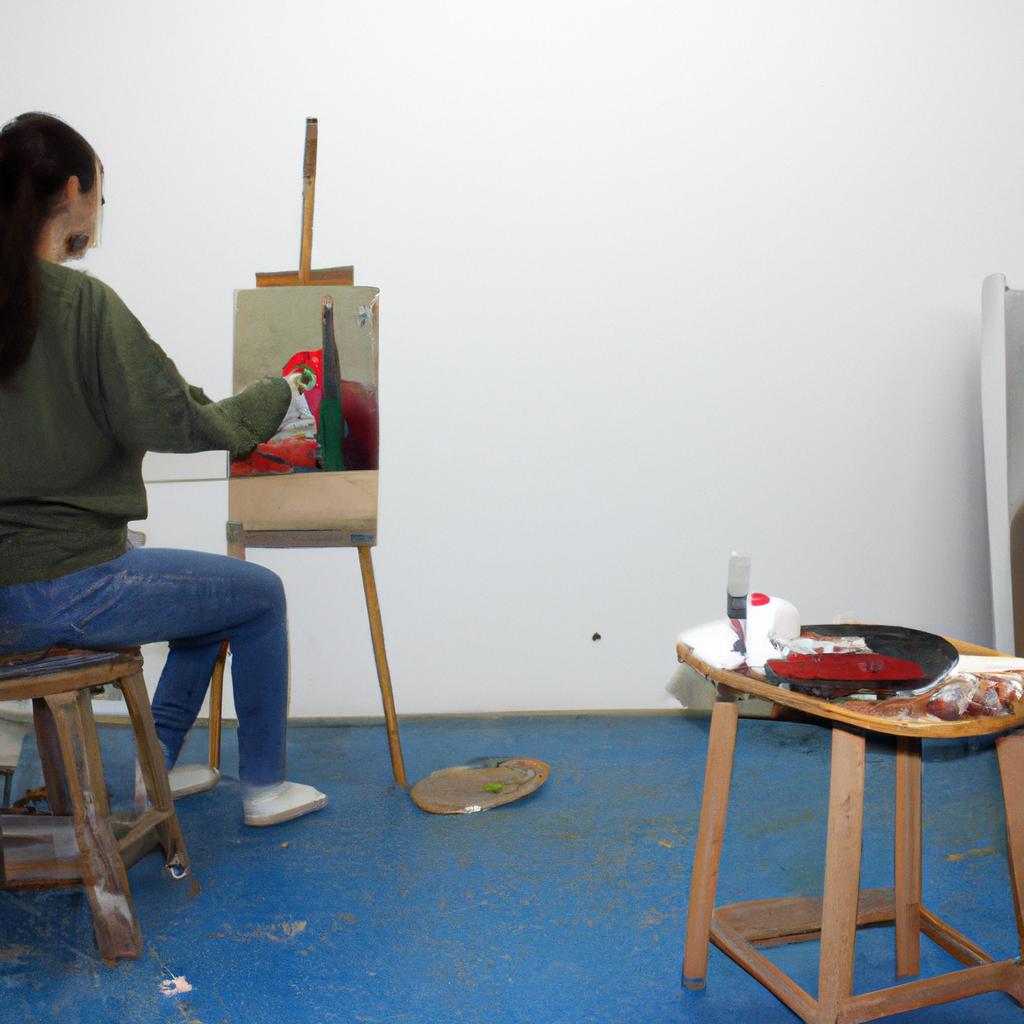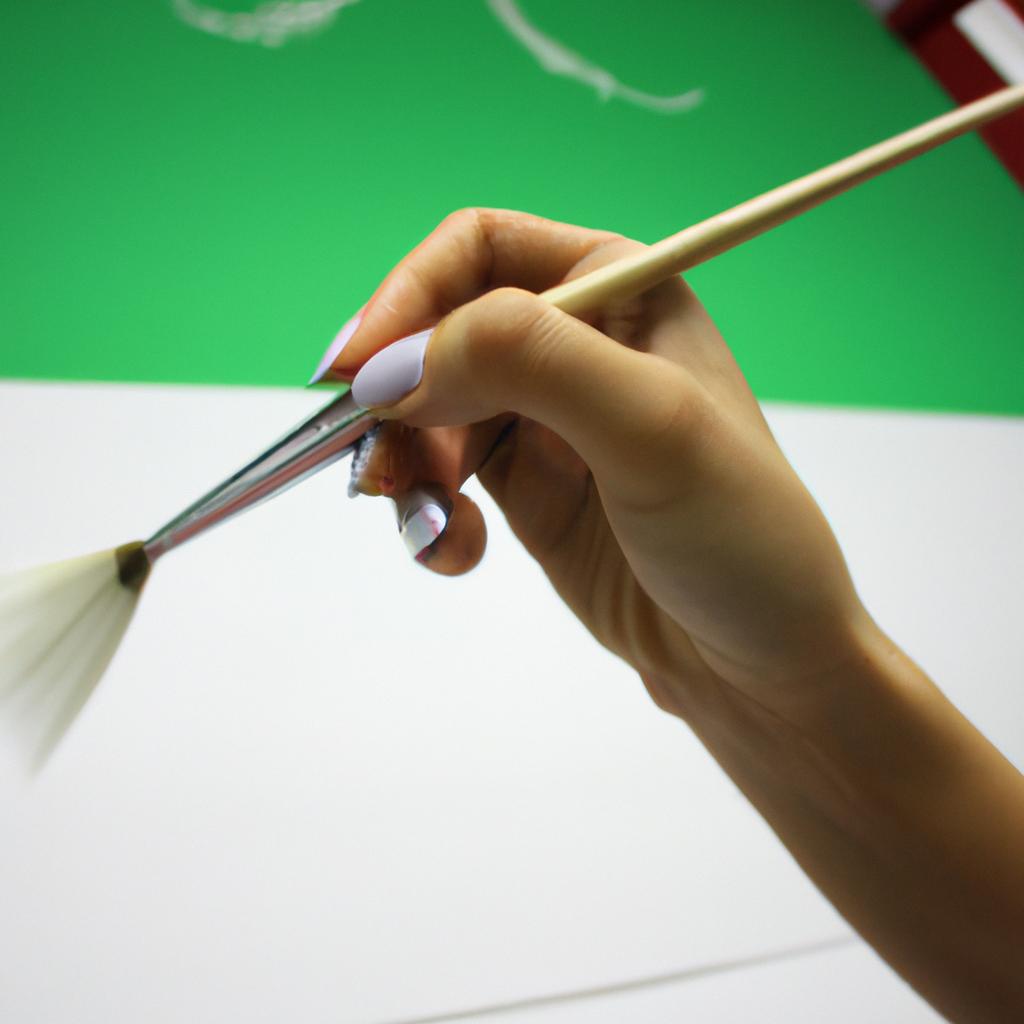Artistic Exhibitions: Visual Arts and Artistic Loans
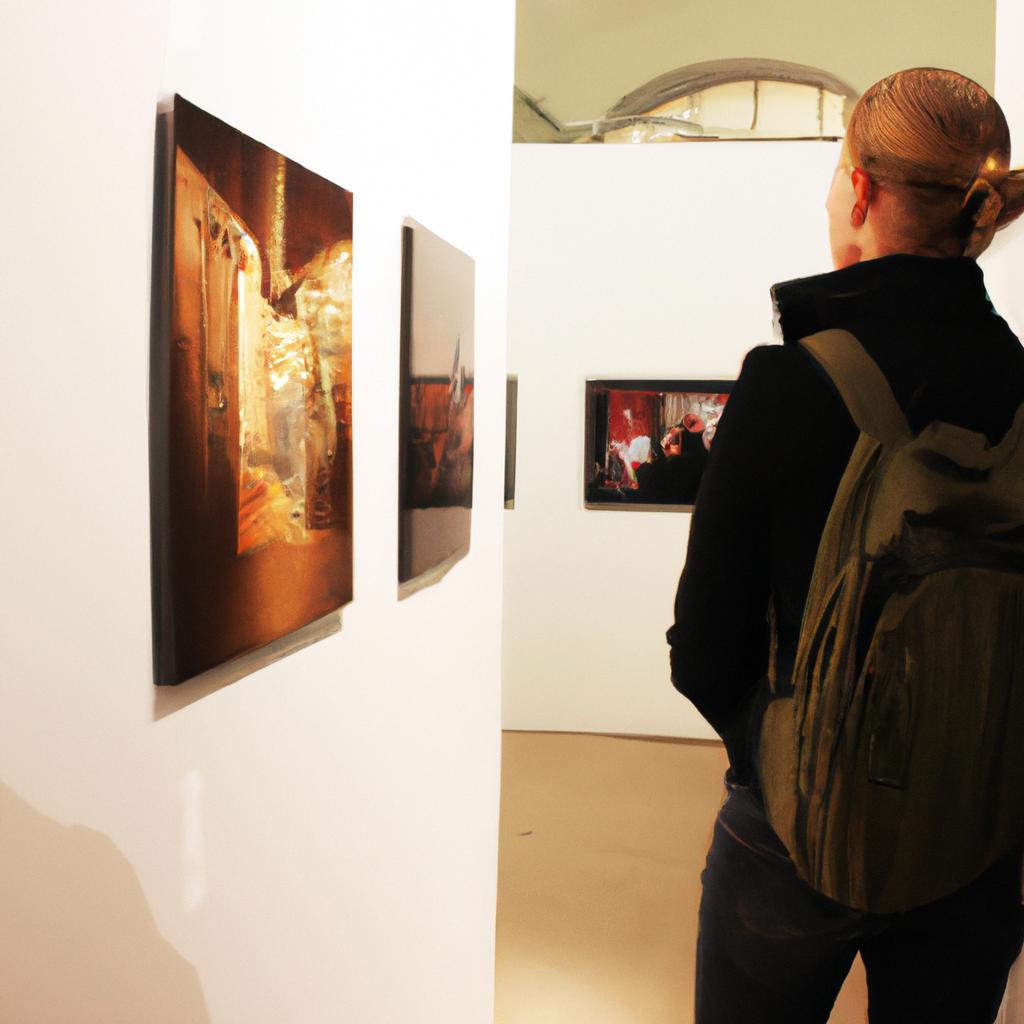
The world of artistic exhibitions encompasses a wide array of visual arts, ranging from paintings and sculptures to installations and performance art. These exhibitions serve as platforms for artists to express their creativity and share their unique perspectives with the audience. In recent years, there has been an increasing trend in the use of artistic loans to enhance these exhibitions, allowing curators access to renowned artworks that may not be part of their permanent collections. For instance, imagine a contemporary art exhibition featuring works by emerging artists from around the globe alongside masterpieces borrowed from prestigious museums; such collaborations can create a captivating dialogue between different generations and styles.
Artistic loans have become an integral aspect of modern exhibitions due to their ability to enrich the viewing experience and broaden cultural horizons. By borrowing significant artworks from other institutions or private collectors, curators can present audiences with visually stunning pieces that are historically and artistically significant. This practice allows viewers to engage with both familiar and unfamiliar works side by side, facilitating connections between various periods, movements, and techniques within the realm of visual arts. Moreover, it offers opportunities for educational exploration, offering visitors insights into specific artists or artistic traditions they may not encounter otherwise. Thus, through strategic incorporation of artistic loans into exhibitions, curators strive to foster appreciation for diverse artistic expressions and cultivate a deeper understanding of the artistic landscape.
In addition to enhancing the viewer’s experience, artistic loans also provide opportunities for institutions to build relationships and collaborations with other museums, galleries, and collectors. Loaning artworks creates a sense of community within the art world, as it allows institutions to share their collections with a broader audience and contribute to the cultural enrichment of different regions. It fosters partnerships that promote knowledge exchange, research, and preservation efforts in the field of art.
However, it is important to note that handling and displaying loaned artworks require careful planning and consideration. Institutions must adhere to strict conservation protocols to ensure the safety and preservation of these valuable pieces throughout transportation, installation, exhibition duration, and return. Curators work closely with conservation experts to guarantee proper climate control, lighting conditions, security measures, and handling procedures are in place.
Overall, artistic loans play a crucial role in shaping dynamic exhibitions that celebrate artistic diversity while offering audiences an opportunity to engage with significant works from various eras and cultures. By embracing this practice, curators can create immersive experiences that stimulate dialogue between artists past and present while fostering appreciation for art’s profound impact on society.
Types of Artistic Exhibitions
Artistic exhibitions play a vital role in showcasing the creativity and talent of artists, allowing them to express their unique perspectives through various forms of visual arts. These exhibitions serve as platforms for artists to engage with audiences, provoke emotions, and stimulate intellectual discourse. Understanding the different types of artistic exhibitions can provide insight into the diverse ways art is presented and experienced.
One example of an artistic exhibition is a solo exhibition, where a single artist’s work takes center stage. This type of exhibition allows viewers to delve deeply into the artist’s creative universe, immersing themselves in their distinct style and thematic concerns. For instance, imagine wandering through a gallery filled with powerful paintings by an abstract expressionist artist. The vibrant colors and bold brushstrokes evoke a range of emotions, from awe to contemplation.
- Inspiration: Artistic exhibitions inspire viewers by offering new perspectives and challenging conventional thinking.
- Reflection: They encourage self-reflection, provoking thoughts about personal experiences or societal issues.
- Empathy: Through evocative imagery or thought-provoking installations, exhibitions foster empathy towards others’ perspectives.
- Connection: Art has the power to bring people together; therefore, these events create opportunities for social connection and dialogue.
In addition to solo exhibitions, other types include group exhibitions featuring works from multiple artists exploring a common theme or concept. Collaborative exhibits allow artists to combine their talents and visions into cohesive presentations. Finally, traveling or loaned exhibits enable artworks to reach larger audiences beyond their original locations.
A table summarizing the different types of artistic exhibitions can be seen below:
| Type | Description |
|---|---|
| Solo Exhibition | Focuses solely on one artist’s body of work |
| Group Exhibition | Showcases works of multiple artists exploring a common theme |
| Collaborative Exhibit | Combines the talents and visions of different artists |
| Loaned Exhibition | Travels to various locations, providing access to diverse audiences |
Understanding the variety of artistic exhibitions enriches our appreciation for the depth and breadth of art. In the subsequent section, we will explore the crucial role curators play in shaping these exhibitions and guiding viewers through their artistic journeys.
The Role of Curators in Artistic Exhibitions
Artistic exhibitions play a vital role in showcasing the diverse and dynamic world of visual arts. These exhibitions provide a platform for artists to display their creativity, allowing viewers to appreciate and engage with different forms of artistic expression. One such example is the annual Art Expo, where renowned artists from around the world gather to exhibit their works.
There are several types of artistic exhibitions that cater to various art forms and themes. Some focus on specific mediums like painting or sculpture, while others explore broader concepts such as contemporary art or surrealism. This diversity allows for a rich tapestry of artworks that appeal to a wide range of audiences. Additionally, these exhibitions often incorporate interactive elements, workshops, and performances to enhance visitors’ experience and deepen their understanding of the artwork.
The success of an artistic exhibition relies heavily on the expertise and curation skills of professionals known as curators. Curators carefully select artworks based on their thematic relevance, aesthetic quality, and historical significance. They also consider how each piece contributes to the overall narrative or concept behind the exhibition. By creating meaningful connections between artworks, curators guide viewers through a coherent and engaging visual journey.
To illustrate further, let’s imagine an upcoming artistic exhibition focused on abstract art. The curator selects four prominent abstract painters from different periods – Mark Rothko, Wassily Kandinsky, Piet Mondrian, and Jackson Pollock – whose works epitomize this genre’s evolution over time. Through careful arrangement and juxtapositions within the gallery space, the curator aims to create dialogues between these artists’ distinctive styles while highlighting key similarities and differences in their approaches.
-
- Evoking emotions:
- Captivating colors
- Expressive brushstrokes
- Intriguing compositions
- Thought-provoking subject matter
- Evoking emotions:
| Artists | Medium | Style |
|---|---|---|
| Mark Rothko | Painting | Color Field |
| Wassily Kandinsky | Painting | Abstract Expressionism |
| Piet Mondrian | Painting, Sculpture | De Stijl |
| Jackson Pollock | Painting | Action painting |
Artistic exhibitions not only provide a platform for artists to showcase their talents but also offer viewers an opportunity to engage with art in a meaningful and thought-provoking manner. By carefully curating artworks and creating immersive experiences, these exhibitions have the power to evoke emotions, broaden perspectives, and inspire creativity. In the subsequent section about “Prominent Artists in Visual Arts Exhibitions,” we will explore the impact of renowned artists on shaping visual arts exhibitions throughout history.
Prominent Artists in Visual Arts Exhibitions
Artistic Exhibitions: Visual Arts and Artistic Loans
The Role of Curators in Artistic Exhibitions sheds light on the significant contributions curators make to the success of these exhibitions. Now, let’s delve into the impact that prominent artists have in visual arts exhibitions, examining their unique perspectives and artistic expressions.
Imagine a visual arts exhibition featuring renowned artist Jackson Evans. With his captivating use of color and texture, Evans creates immersive art experiences that transport viewers into different realms of imagination. His pieces often challenge conventional norms and push boundaries, inviting spectators to question societal constructs. Through his thought-provoking artwork, Evans aims to evoke emotions and ignite conversations about social justice issues.
Prominent artists like Jackson Evans bring diversity and innovation to visual arts exhibitions through their distinct styles and techniques. Here are some key ways in which they contribute:
- Unique Perspectives: Prominent artists offer fresh perspectives on various themes and subjects, providing new insights for viewers.
- Experimental Approaches: They employ innovative techniques or unconventional materials, pushing artistic boundaries and inspiring fellow artists.
- Cultural Representation: These artists may explore cultural identities or share narratives from underrepresented communities, fostering inclusivity within the art world.
- Influential Networks: Prominent artists often have vast networks within the art community, allowing them to collaborate with other talented individuals or secure loans for exceptional artworks.
To further understand the role of prominent artists in visual arts exhibitions, consider the following table showcasing notable contemporary painters along with their distinctive styles:
| Artist | Style | Notable Works |
|---|---|---|
| Jackson Evans | Abstract Expressionism | “Vibrant Dreams,” “Ethereal Echoes” |
| Emily Chen | Realism | “Still Waters,” “Captured Moments” |
| Marcus Rodriguez | Pop Art | “Iconic Culture,” “Modern Whimsy” |
| Maya Patel | Surrealism | “Dreamscapes,” “Visions Unveiled” |
These artists, among others, contribute to the rich tapestry of visual arts exhibitions by bringing their unique perspectives and artistic expressions. By examining their works and exploring different mediums, we can gain a deeper appreciation for the diverse world of art.
Transitioning into the subsequent section about “Exploring Different Artistic Mediums,” we will now explore how artists utilize various mediums to convey their creative visions in captivating ways.
Exploring Different Artistic Mediums
Building on the prominence of artists in visual arts exhibitions, it is equally important to delve into the diverse range of artistic mediums that contribute to these captivating showcases. By examining various mediums and their unique qualities, we can gain a deeper understanding of how they enhance the overall experience for both artists and viewers.
To illustrate this point, let us consider an example where a contemporary art exhibition features works from renowned artists who employ different mediums. One artist might specialize in oil paintings, utilizing bold brushstrokes and vibrant colors to evoke powerful emotions. Another artist may focus on sculpture, crafting intricate pieces that invite tactile exploration. A third artist could showcase digital art, creating immersive installations that blend technology with traditional artistic techniques. This diversity of mediums not only adds variety but also allows for a more comprehensive representation of artistic expression.
In exploring different artistic mediums, several key factors come into play:
- Materiality: Each medium presents its own set of physical properties and constraints. For instance, painting requires canvas or paper as a surface, while sculpture necessitates materials such as clay or metal.
- Technique: Artists develop specific skills and techniques tailored to their chosen medium. The application of paint differs significantly from sculpting or working with digital tools, resulting in distinct textures and styles.
- Audience engagement: Different mediums elicit varying emotional responses from viewers. Paintings may prompt introspection through contemplative imagery, sculptures engage tactile senses by inviting touch, while interactive installations foster active participation.
- Cultural significance: Some artistic mediums carry historical or cultural connotations that enrich the narratives conveyed by artworks. Traditional methods like printmaking or calligraphy connect contemporary works to centuries-old practices and traditions.
By recognizing the importance of exploring different artistic mediums within exhibitions, we begin to grasp the richness and complexity inherent in these creative endeavors. Such diversity encapsulates the multifaceted nature of human expression and provides audiences with opportunities for meaningful engagement.
Transitioning into the subsequent section about “The Impact of Artistic Exhibitions on Society,” it becomes evident that understanding various artistic mediums is key to comprehending how these exhibitions shape and influence society at large. The exploration of different mediums allows for a broader range of perspectives, fostering dialogue and encouraging individuals to contemplate the interplay between art and their own lives.
The Impact of Artistic Exhibitions on Society
Transitioning from the previous section on exploring different artistic mediums, we now delve into the impact of artistic exhibitions on society. To illustrate this influence, let us consider a hypothetical case study: an art gallery showcasing diverse visual arts and featuring unique artistic loans.
Artistic exhibitions have the power to captivate audiences and evoke emotions through their visual storytelling. For instance, imagine entering a contemporary art exhibition where vibrant paintings, intricate sculptures, and immersive installations are displayed. The eclectic mix of artworks engages viewers in a multisensory experience, stimulating curiosity and encouraging introspection.
These exhibitions provide a platform for artists to express themselves freely and showcase their creative visions. Through the curation of various artworks, they challenge societal norms, provoke thought-provoking discussions, and foster cultural exchange. Additionally, by including loaned artworks from renowned artists or prestigious collections, galleries can augment their offerings and attract more visitors seeking exposure to influential pieces that may otherwise be inaccessible.
To further highlight the significance of artistic exhibitions on society, consider the following emotional response evoked in viewers:
- Awe: Witnessing awe-inspiring works of art can leave spectators feeling humbled by human creativity’s boundless possibilities.
- Empathy: Art has the ability to tap into our shared humanity; it can elicit empathy towards others’ experiences and struggles.
- Inspiration: Viewing exceptional artwork often sparks inspiration within individuals who are compelled to explore their own creative endeavors.
- Reflection: Engaging with thought-provoking artworks prompts self-reflection as viewers contemplate deeper meanings behind each piece.
Moreover, let us visualize these impacts through a table outlining some common emotions experienced during artistic exhibitions:
| Emotion | Description |
|---|---|
| Wonder | Feeling amazed or astonished |
| Curiosity | Eager desire to learn more or understand |
| Contemplation | Deep reflection or thoughtful consideration |
| Fascination | Intense interest or attraction |
In conclusion, artistic exhibitions hold a profound sway over society through their ability to engage and inspire viewers. By providing a platform for artists to express themselves, these exhibitions challenge societal norms and foster cultural exchange. Furthermore, the emotional responses evoked by witnessing art encourage introspection, empathy, inspiration, and reflection within individuals. Understanding the impact of artistic exhibitions on society paves the way for recognizing their importance in supporting and nurturing artists’ creative journeys.
Transitioning into the subsequent section discussing “The Importance of Artistic Exhibitions for Artists,” we delve deeper into how these platforms serve as stepping stones for artistic growth and recognition.
The Importance of Artistic Exhibitions for Artists
Artistic exhibitions have a profound impact on society, shaping cultural norms and influencing individuals’ perspectives. These events provide a platform for artists to showcase their work, attracting diverse audiences who engage with the artwork in various ways. By exploring different themes and artistic styles, exhibitions contribute to the enrichment of societal discourse and foster creative expression. To illustrate this point further, let us consider an example where an art exhibition centered around environmental conservation raises awareness about pressing ecological issues.
One such hypothetical exhibition titled “Nature’s Voice” focuses on highlighting the beauty of nature while shedding light on its vulnerability due to human activities. The artworks featured include vibrant paintings depicting endangered species, thought-provoking sculptures crafted from recycled materials, and immersive installations that simulate natural habitats. Through this exhibition, visitors are encouraged to reflect upon their relationships with the environment and consider how individual actions can make a difference.
The impact of artistic exhibitions extends beyond mere visual enjoyment or aesthetic appreciation. They evoke emotional responses in viewers through powerful storytelling techniques employed by artists. Here are four key emotional responses often evoked during these events:
- Empathy: Artworks portraying human suffering or marginalized communities elicit empathy and encourage viewers to understand others’ experiences.
- Awe: Large-scale installations or breathtaking landscapes depicted in paintings inspire awe among spectators as they encounter grandeur beyond everyday life.
- Contemplation: Abstract or minimalist works provoke contemplation, inviting viewers to explore deeper meanings behind seemingly simple compositions.
- Nostalgia: Photographs capturing nostalgic moments from history evoke sentimentality and prompt reflection on past times.
Moreover, artistic exhibitions often employ various mediums to convey messages effectively. The table below exemplifies three common types of exhibits and their respective characteristics:
| Type | Characteristics |
|---|---|
| Solo Exhibition | Focuses solely on one artist’s body of work |
| Group Exhibition | Showcases artworks from multiple artists, often with a unifying theme |
| Retrospective | Offers a comprehensive overview of an artist’s entire career, featuring their major works |
Through these different types of exhibitions, art organizations and curators aim to present diverse perspectives and foster dialogue among viewers. By engaging with various artistic expressions, individuals are exposed to new ideas and experiences that challenge preconceived notions.
In conclusion, the impact of artistic exhibitions on society is multi-faceted. They not only provide platforms for artists but also contribute to cultural enrichment and societal discourse. Through evoking emotional responses in viewers and utilizing different mediums of expression, exhibitions create opportunities for reflection, empathy, awe, and nostalgia. By fostering dialogue and encouraging engagement with artwork, these events play a crucial role in shaping societal values and promoting creative expression.
